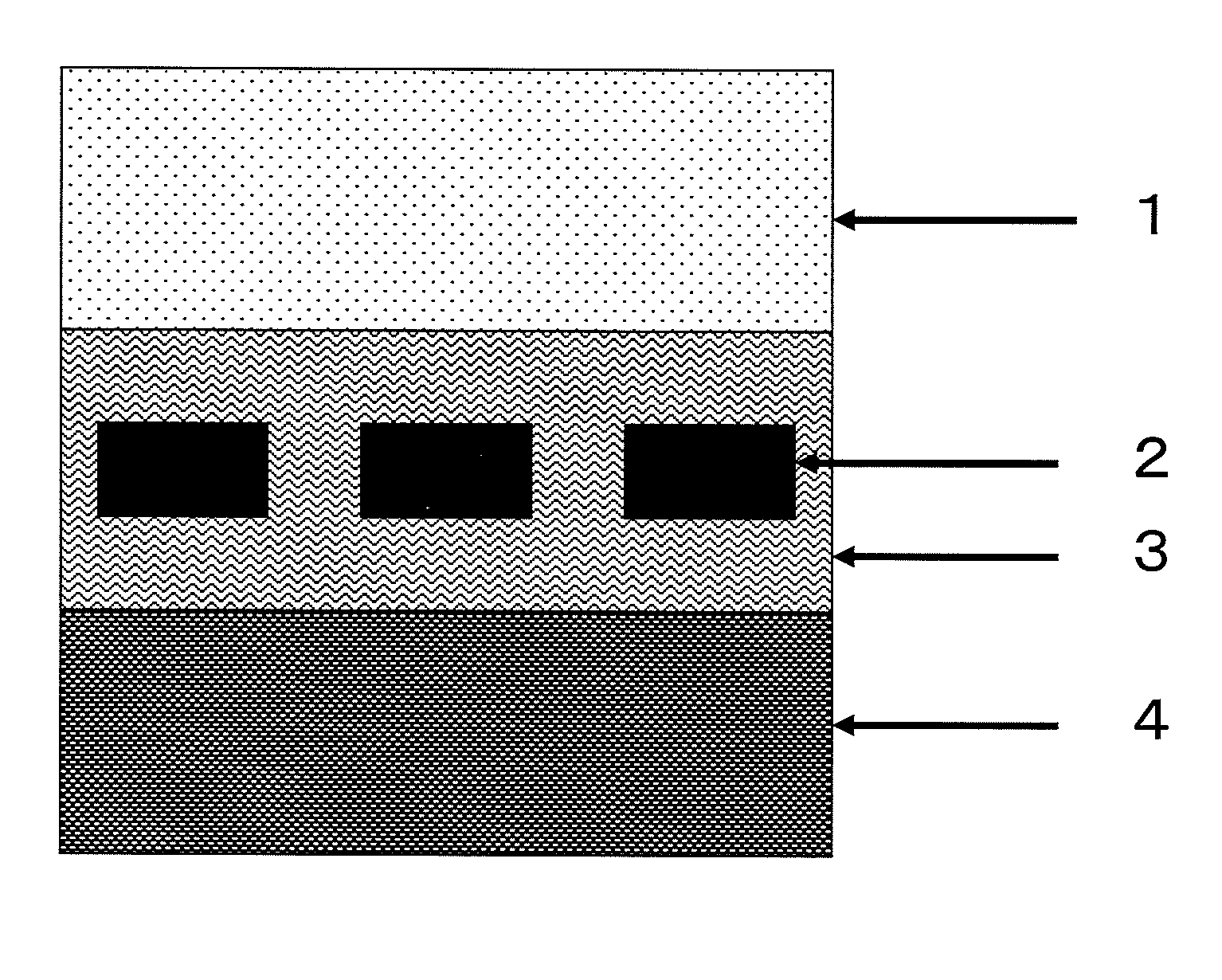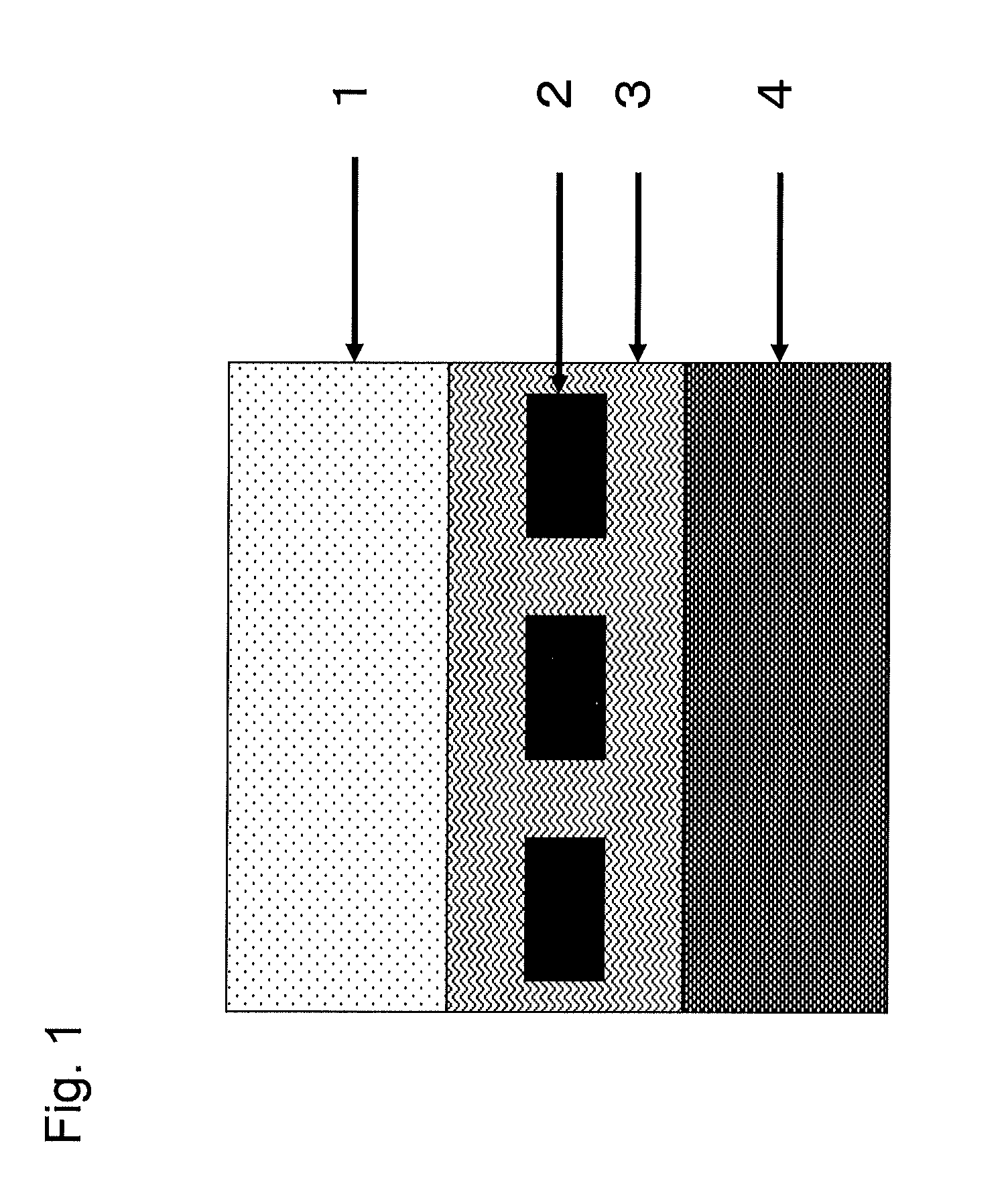Backside protective sheet for solar cell module
a solar cell module and protective sheet technology, applied in the field of solar cell module reverse face protective sheet, can solve the problems of temperature rise of solar cell module and still arisen problems, and achieve the effects of preventing a decrease in reducing the total heat generation, and improving the power generation efficiency of the solar cell
- Summary
- Abstract
- Description
- Claims
- Application Information
AI Technical Summary
Benefits of technology
Problems solved by technology
Method used
Image
Examples
example 1
[0149]A 250-μm-thick PET film of Lumirror (registered trademark) X10S supplied by Toray industries, Inc. was used as hydrolysis resistant polyester film, and a film water supplied by Okazaki Machine Industry Co., Ltd. was used to treat it for 60 sec at a drying temperature of 160° C. This hydrolysis resistant polyester film had a retained tensile elongation rate of 85%. Subsequently, 1 part by weight of a KR-90 curing agent supplied by DIC Corporation was added to 10 parts by weight of an LX-703 VL adhesive supplied by DIC Corporation, diluted with ethyl acetate to adjust the solid content to 30 wt %, and applied using a film coater supplied by Okazaki Machine Industry Co., Ltd. to form an adhesive layer having a coat layer thickness of 5.0 μm after being dried at a drying temperature of 120° C.
[0150]Titanium oxide master batch A containing 60 wt % of rutile type titanium oxide particles with an average particle diameter of 230 nm was produced by subjecting 40 wt % of 1-butene-copol...
example 2
[0154]Except that the hydrolysis resistant polyester film of Lumirror X10S supplied by Toray Industries. Inc. had a thickness of 125 μm, the same procedure as in Example 1 was carried out. This hydrolysis resistant polyester film had a retained tensile elongation rate of 85%. As the hydrolysis resistant polyester film was thinner, the absorptance was lower than in the case of Example 1.
example 3
[0155]Except that white PE1 had a thickness of 100 μm, the same procedure as in Example 2 was carried out. As white PE1 was thinner, the reflectance was lower and the absorptance was higher than in the case of Example 2.
PUM
| Property | Measurement | Unit |
|---|---|---|
| reflectance | aaaaa | aaaaa |
| tensile elongation rate | aaaaa | aaaaa |
| tensile elongation rate | aaaaa | aaaaa |
Abstract
Description
Claims
Application Information
 Login to View More
Login to View More - R&D
- Intellectual Property
- Life Sciences
- Materials
- Tech Scout
- Unparalleled Data Quality
- Higher Quality Content
- 60% Fewer Hallucinations
Browse by: Latest US Patents, China's latest patents, Technical Efficacy Thesaurus, Application Domain, Technology Topic, Popular Technical Reports.
© 2025 PatSnap. All rights reserved.Legal|Privacy policy|Modern Slavery Act Transparency Statement|Sitemap|About US| Contact US: help@patsnap.com



